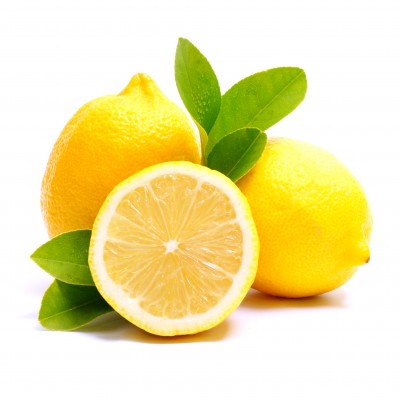What aromas can you perceive in a fruity wine?
Go back to the Wine Aroma Dictionary
This part of the wine aroma dictionary lets you discover fruity wine aromas. This is still a work in progress and regularly I will add new descriptors extracted from the wine aroma wheel .
Feel free to leave a comment or question at the bottom of the page.

- Aroma: Apricot
- Category: Fruity
- Type: Tree Fruit
- Aroma definition: Apricot aromas are often associated with fresh ripe fruits although apricot jam can be perceived in late harvest wines or icewines. One of the flavor compounds imparting this note is R (+) - γ-Decalactone. This compound does not tend to volatilize quickly and you may have to swirl your glass more than usual or wait to taste the wine in your mouth to be able to perceive it.
- Origin: This aroma compounds come from the grape berries and can be imparted by specific wine making practices such as "sur lies"
- Wine style: Fruity wines such as Viognier, late harvest Riesling, Vidal icewine, Syrah made in the Côtes du Rhône style
- Aroma standard: If you can get very ripe apricots, press them and extract the juice to add to a glass of white wine. You may work with commercial juice or canned fruits and use the flavored syrup, however you may obtained more cooked aromas than fresh ones.
- Note: Although apricot is clearly distinct from the peach aroma on the wheel, these two descriptors tend to be associated often in wine conversation, likely because the perceptions are very close.
Image credit: natika / 123RF Stock Photo

- Aroma: Banana
- Category: Fruity
- Type: Tropical Fruit
- Aroma definition: I often perceive banana as aromas in young white wines. It evokes the ripe, almost too ripe banana fruit. Cold fermented wines or wines made using carbonic maceration like the Beaujolais nouveau have this fruity wine character.
- Origin: The compound responsible for this aroma in wine is called isoamyl acetate, an ester formed from isoamyl alcohol and acetic acid. It is a product of the grape fermentation.
- Wine style: Young wines usually. Nouveau wines, red or white.
- Aroma standard: one 10 mm slice of fresh and ripe banana in a white or red wine. You may try to add few drops of banana extract sold in the bakery section of your grocery store.
Image credit:aarrows / 123RF Stock Photo

- Aroma: Grapefruit
- Category: Fruity
- Type: Citrus
- Aroma definition: This wine aroma evokes grapefruit rind, zest, or juice can be perceived in various styles of wine. The chemical compounds imparting such aroma are called thiols; the aroma may change to most intense sulfurous notes if the thiol concentration is high.
- Origin: These aroma compounds come from the grape berries and are released during wine making. Some yeast may exacerbate the production of these thiols.
- Wine Style: Grapefruit aroma can be perceived in fruity wines such as Sauvignon blanc/Sancerre although, I have perceived it in Gamay.
- Aroma standard: In 30 ml of white wine, pour a Tbsp of fresh grape juice or of non sweetened commercial juice. If you tasted the reference, you may find the wine bitter due to the natural bitter compounds found in grapefruit juice. If you pressed the fruit to hard and close to the rind, you may also perceive some astringency, a mouthfeel perception that will cause a dry sensation in your your mouth.
Image credit:etiamos / 123RF Stock Photo
Learn more about how to make your own wine aroma kit.

- Aroma: Lemon
- Category: Fruity
- Type: Citrus
- Aroma definition: Aroma evoking lemon rind, zest, or juice can be perceived in various style of wine. Chemical compounds imparting such aroma are called aldehydes (citral, neral) or terpenes (limonene).
- Wine style: various white wines
- Aroma standard: In 30 ml of white wine, pour a Tbsp of fresh lemon juice or of non sweetened commercial juice. If you tasted the reference, you may find the wine acid/tart due to the natural acidity found in lemon juice.
- Note: Often, novice tasters associate lemon aroma and acid taste. Although they can both be perceived in an actual lemon, they don’t always go hand in hand. With a little training, one can learn how to dissociate the two perceptions. To be honest, it’s not easy, but practice is the best way to achieve this ability.
Lime has a different aroma and can occasionally be perceived in some fruity wines along with other tropical notes.
Image credit: cjung / 123RF Stock Photo

- Aroma: Lychee
- Category: Fruity
- Type: Tropical fruit
- Aroma definition: Aroma evoking the smell of lychee fruits and reminiscent of rose water. Several aromatic compounds have been identified as part of the lychee aroma: cis-rose oxide, linalool, or geraniol.
- Origin: Grape berries
- Wine style: Signature aroma of Gewürztraminer wine, the Alsatian fruity white wine now widely produced worldwide for its intense fruity and floral aromas. The rose / lychee aromas complement the flavors of Asian cuisine.
- Aroma standard: Place a few drops of rose water or juice of canned lychees in a white wine base.
Image credit: photomaru / 123RF Stock Photo
Home > Wine Aroma Dictionary > Fruity

